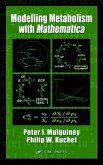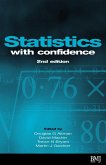This self-contained book focuses on three categories of disease: cancer, viral diseases, and dynamical diseases. It presents the medical and biological background of the diseases, specific issues to be modeled, and existing methods and their limitations. The book introduces mathematical and programming tools, along with analytical and numerical studies of the models. The authors also develop new mathematical tools and look to future improvements on dynamical models. The text provides exercises and projects at the end of most chapters, hints and answers to selected problems at the back of the book, and a supplementary website with lecture notes, homework problems, useful computer programs, and other reference material.
Extensively classroom-tested in undergraduate and graduate courses, this self-contained book presents biologically well-motivated and mathematically tractable models that facilitate both a deep understanding of cancer biology and better cancer treatment designs. It covers the medical and biological background of the diseases, modeling issues, and existing methods and their limitations. The authors introduce mathematical and programming tools, along with analytical and numerical studies of the models. They also develop new mathematical tools and look to future improvements on dynamical models.
Extensively classroom-tested in undergraduate and graduate courses, this self-contained book presents biologically well-motivated and mathematically tractable models that facilitate both a deep understanding of cancer biology and better cancer treatment designs. It covers the medical and biological background of the diseases, modeling issues, and existing methods and their limitations. The authors introduce mathematical and programming tools, along with analytical and numerical studies of the models. They also develop new mathematical tools and look to future improvements on dynamical models.








